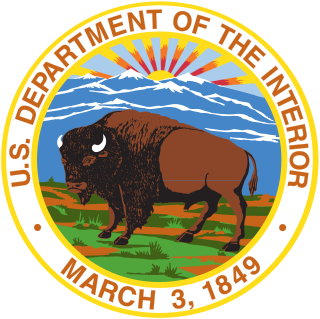
Politics of American Samoa takes place in a framework of a presidential representative democratic dependency, whereby the Governor is the head of government, and of a pluriform multi-party system. American Samoa is an unincorporated and unorganized territory of the United States, administered by the Office of Insular Affairs, U.S. Department of the Interior. Its constitution was ratified 1966 and came into effect 1967. Executive power is discharged by the governor and the lieutenant governor. Legislative power is vested in the two chambers of the legislature. The party system is a based on the United States party system. The judiciary is independent of the executive and the legislature.
A constituent assembly or constitutional assembly is a body or assembly of popularly elected representatives composed for the purpose of drafting or adopting a constitutional-type document. The constituent assembly is a subset of a constitutional convention elected entirely by popular vote; that is, all constituent assemblies are constitutional conventions, but a constitutional convention is not necessarily a constituent assembly. As the fundamental document constituting a state, a constitution cannot normally be modified or amended by the state's normal legislative procedures; instead a constitutional convention or a constituent assembly, the rules for which are normally laid down in the constitution, must be set up. A constituent assembly is usually set up for its specific purpose, which it carries out in a relatively short time, after which the assembly is dissolved. A constituent assembly is a form of representative democracy.

Territories of the United States are sub-national administrative divisions overseen by the federal government. They differ from U.S. states and Native American tribes, which have limited sovereignty. The territories are classified by incorporation and whether they have an "organized" government through an organic act passed by Congress.
In the United States, each state has its own constitution.
The Constitution of American Samoa is the constitution that defines the government of American Samoa.

The Constitution of Uganda is the supreme law of Uganda. The fourth and current constitution was promulgated on 8 October 1995. It sanctions a republican form of government with a powerful president.

The Constitution of Uruguay is the supreme law of Uruguay. Its first version was written in 1830 and its last amendment was made in 2004.
The government of American Samoa is defined under the Constitution of American Samoa.

The 1967 New York state election was held on November 7, 1967, to elect two judges to the New York Court of Appeals. In addition, a revised State Constitution was proposed, and rejected; and a $2,500,000,000 transportation bond issue was approved by the voters.

The American Samoan general election of 2010 took place on November 2, 2010. The deadline to register as a candidate for the election was September 1, 2010.

A constitutional referendum was held in American Samoa on November 2, 2010, on the same day of the United States House of Representatives election and American Samoan general election.

A double referendum on a new constitution and independence took place in Western Samoa on 10 May 1961. A Constitutional Convention of Matai and associated groups had drawn up a proposed constitution. It reflected the Westminster system of parliamentary democracy, but restricted both standing and voting in elections to the Matai. The referendums were supervised by the United Nations, and with both approved, the country gained independence on 1 January the following year.
The Ratification Act of 1929 was joint resolution of the United States Congress that authorized the ratification of the Treaty of Cession of Tutuila of 1900 and the Treaty of Cession of Manuʻa of 1904, which ceded the islands of Tutuila and Manuʻa, respectively, to the United States and now form part of American Samoa. As such it is one of the basic Constitutional documents of American Samoa.

A referendum on a new constitution was held in American Samoa on 4 November 1986. Voters were asked to approve a proposed constitution developed by a Constitutional Council. The measure failed and the 1960 constitution remained in force.
A constitutional referendum was held in the Philippines on 14 November 1967. On 16 March 1967 Congress decided that a Constitutional Convention would be elected in 1971. In preparation for the election, two amendments to the constitution were proposed beforehand. Voters were asked whether they approved of two amendments to the Constitution of the Philippines; one to increase the number of members of the House of Representatives from 120 to 180, and one to allow members of Congress to be elected to Constitutional Conventions without giving up their Congress seats. A petition seeking to stop the referendum was filed before the Supreme Court, but was dismissed five days before the referendum. Both proposals were rejected by voters.

A constitutional referendum was held in American Samoa on 2 November 1976. The amendment proposed introducing a new section 25 to Chapter II, article 25 of the constitution, which would have read:
Section 25. Compensation of the legislature. The compensation of the members of the Legislature is provided by law.

The sixth Constitution of Uruguay came into force in 1967.

A constitutional referendum was held in American Samoa on 4 November 2014. The proposed amendment to the constitution would allow the Fono to override vetoes by the Governor.

The Constitution of the Central African Republic was approved by referendum on December 15, 2015 and formally adopted on March 27, 2016. Since its independence in 1960, the Central African Republic has used many constitutions, showing a great political instability with coups.









